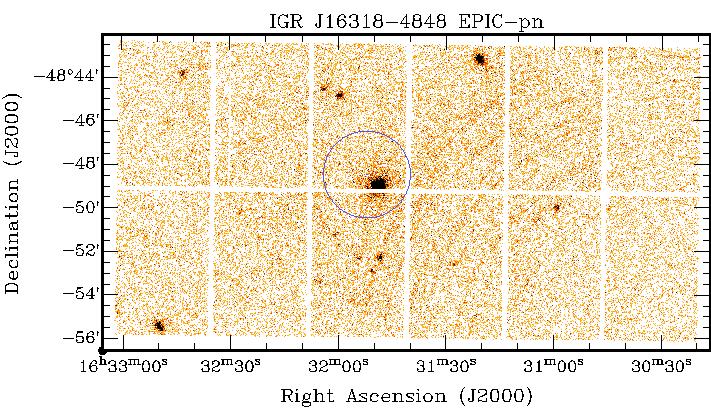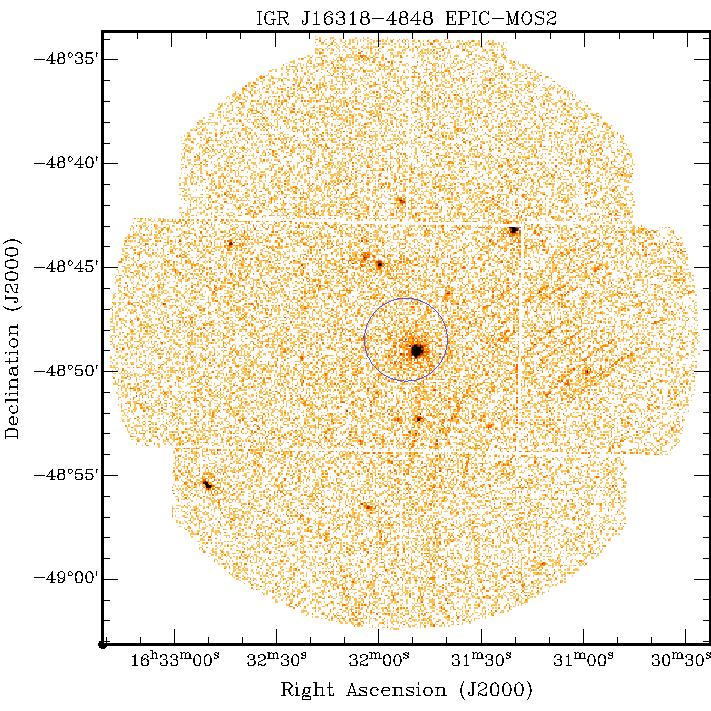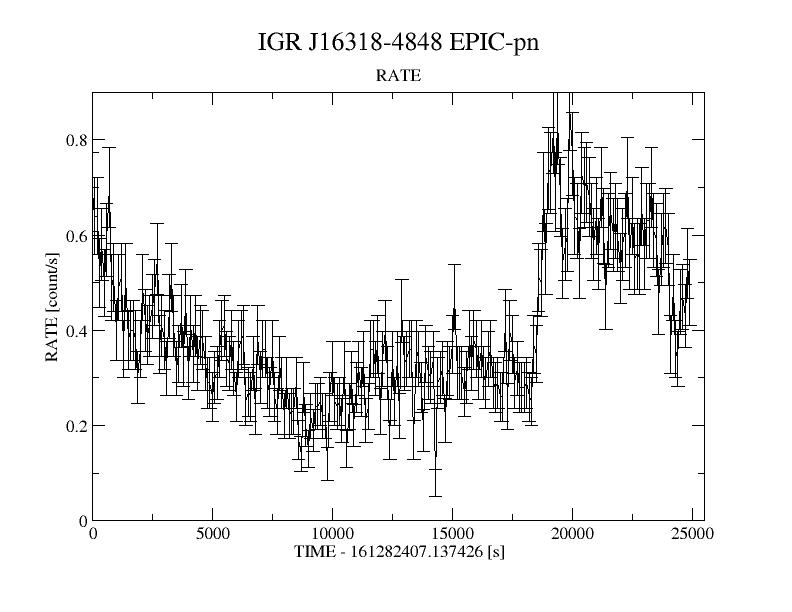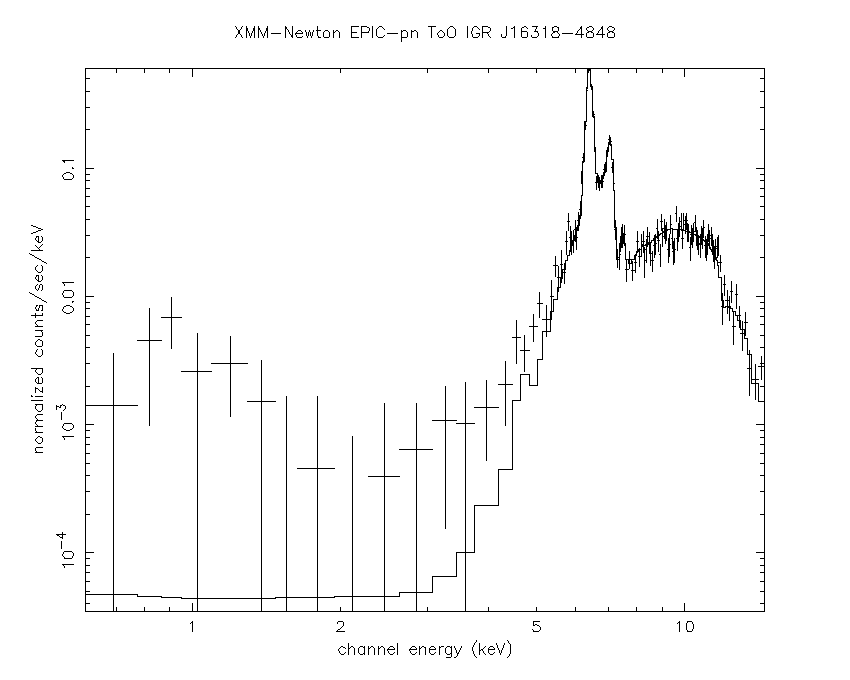igr-j16318 - XMM-Newton
XMM-Newton Observations of IGR J16318-4848
Events
- On 2003 February 4, the XMM-Newton SOC received a Target of Opportunity notification after the detection of a transient source, IGR J16318-4848, by the ISGRI detector of the IBIS instrument onboard ESA's INTEGRAL satellite.
- This transient gamma-ray source was immediately approved by the XMM-Newton SOC for a ToO observation.
The observation was started on 2003-02-10T16:20:41Z under ObsId=0154750401 during XMM-Newton's revolution number 0581. - The pointing coordinates were RA = 16:31:52 and Dec = -48:48:30 (IAUC/8063, 2003 February 1). The uncertainty in coordinates was reported as being about 2 arcminutes.
- A source was shortly identified in EPIC, ~30 arcseconds off in Dec and ~75 arcseconds off in RA from the reported coordinates. The EPIC source position of the IGR J16318-4848 X-ray counterpart was determined as RA = 16:31:48.6 and Dec -48:49:00. As stated below this position is still subject to an uncertainty of about 4 arcseconds.
- On 2003 February 11, Murakami et al. reported (IAUC/8070) the detection of an X-ray source in ASCA archival data at a position consistent with that of IGR J16318-4848. The SIS position was determined as RA = 16:31:49 and Dec = -48:49:12 with an uncertainty of about 0.8 arcminutes. A hint of an iron emission line at 6.4 keV was noticed.
- The images, spectra and light curve presented here are based on a preliminary processing without the re-constituted XMM-Newton Attitude History File. Therefore, the positions quoted are subject to an uncertainty of 4 arcseconds.
Data
- The Observation Data File (ODF) is available here as 0154750401.tar.gz.
- The Pipeline Products are now also available in the ftp area. Details of the Pipeline process can be found here
Preview of XMM-Newton images
Large window mode pn image in sky coordinates. The IGR J16318-4848 error circle based on IAUC/8063 is marked in blue.

Full frame mode MOS-2 image in sky coordinates. The IGR J16318-4848 error circle based on IAUC/8063 is marked in blue.

Quick Look Analysis
Light curve for the brightest pn source. Only pixels within ~50 arcseconds radius around the source peak have been considered. Click on the image to see it at high resolution
The total count rate from the brightest source varies by a factor ~3 in ~25ks.
EPIC-pn spectrum of the brightest source. Only pixels within ~50 arcseconds radius around the source peak have been considered. Click on the image to see it at high resolution
- Removed a total of (4) style text-align:center;
- Converted a total of (4) center to div.








































 Sign in
Sign in
 Science & Technology
Science & Technology

